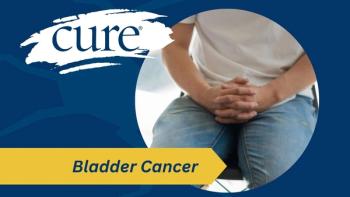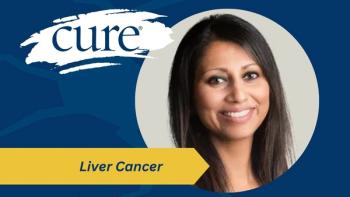Heavily pretreated patients with chronic lymphocytic leukemia (CLL) showed deep responses when treated with Epkinly (epcoritamab-bysp) monotherapy, according to findings from the EPCORE CLL-1 trial, presented in a press briefing during the 2024 ASH Annual Meeting.
Results showed that in the expansion cohort, which had a median follow-up of 22.8 months, the overall response rate (ORR) in 21 response-evaluable patients was 67%, and the complete response (CR) rate was 43%. In 15 patients with TP53 aberrations, these rates were 67% and 33%, respectively; in the IGHV-unmutated group of 16 patients, these were 63% and 44%. In 19 patients who were double-exposed to both a BTK and BCL-2 inhibitor, the ORR was 53% and the CR rate was 37%.
In the cycle 1 optimization (C1 OPT) cohort, which had a median follow-up of 2.9 months among 10 evaluable patients, the ORR was 60%, and the CR rate was 10%.
“There was a comparable ORR between the expansion and C1 OPT cohorts, with limited follow-up for C1 OPT efficacy,” explained lead study author Dr. Alexey Danilov, in a press briefing during the meeting. “Simple C1 OPT measures of an additional [step-up dosing], dexamethasone, and adequate hydration decreased the risk and severity of [side effects] of special interest.”
Danilov serves as the Marianne and Gerhard Pinkus Professor of Early Clinical Therapeutics, medical director of the Early Phase Therapeutics Program for the Systems Clinical Trials Office, co-director of the Toni Stephenson Lymphoma Center, and professor in the Division of Lymphoma of the Department of Hematology & Hematopoietic Cell Transplantation, all within City of Hope in Duarte, California.
Glossary:
Overall response rate (ORR): the percentage of patients who have a complete or partial response to treatment, meaning their tumors either disappeared or shrunk after treatment.
Complete response (CR): patients who fully responded to treatment, meaning they no longer have signs or symptoms of cancer.
Cytokine release syndrome (CRS): a condition that occurs when the body overreacts to immunotherapy, which can become life-threatening if not treated immediately.
ECOG performance status: a measurement of how independently patients can perform daily tasks. A status of zero means they can complete tasks independently and a status of 4 means they cannot perform tasks independently.
Immune effector cell-associated neurotoxicity syndrome (ICANS): a side effect of immunotherapies; the body’s reaction that can cause inflammation in the brain.
Clinical tumor lysis syndrome (CTLS): a condition that can be life-threatening, in which cancer cells rapidly break down and release their contents into the bloodstream, leading to complications.
Minimal residual disease (MRD): microscopic traces of cancer cells that remain in the body after treatment.
Partial response (PR): patients whose tumors shrunk but did not completely disappear after treatment.
Stable disease (SD): patients whose cancer did not worsen or improve after treatment.
Progressive disease (PD): patients whose cancer worsened or spread after treatment.
Progression-free survival (PFS): time after treatment when patients live without their disease worsening or spreading.
Overall survival (OS): time patients live, regardless of their disease status, until death of any cause.
Epkinly is a bispecific CD20-directed CD3 T-cell engager, which was FDA-approved in June for the treatment of adult patients with relapsed or refractory follicular lymphoma following at least two prior lines of systemic therapy.
In the expansion cohort of the Epcore CLL-1 trial, 23 patients were given a step-up dose schedule of 0.16 milligrams (mg) of Epkinly on cycle 1, day 1; 0.8 mg on cycle 1, day 8; and then the first full dose of 48 mg on cycle 1, day 15. Prophylaxis for cytokine release syndrome (CRS) with prednisone was also permitted. The data cutoff date was May 28, 2024, and the median follow-up was 22.8 months.
In the C1 OPT cohort of 17 patients, CRS prophylaxis with dexamethasone and adequate hydration was given. This also included a step-up dose design of 0.16 mg on cycle 1, day 1; 0.8 mg on cycle 1, day 8; 3 mg on cycle 1, day 15; followed by the first full dose of 48 mg on cycle 1, day 22. Here, the data cutoff date was May 28, 2024, and the median follow-up was 2.9 months.
To be eligible for enrollment, patients must have had CD20-positive relapsed or refractory CLL, received at least two prior lines of systemic therapy and had an ECOG performance status of 0 to 2. No prior allogeneic hematopoietic cell transplant was permitted.
The primary end point in the expansion cohort was ORR; in the C1 OPT cohort, this was incidence and severity of CRS, immune effector cell-associated neurotoxicity syndrome (ICANS) and clinical tumor lysis syndrome (CTLS). Key secondary end points in the expansion cohort included CR rate, time to response, minimal residual disease (MRD), and safety and tolerability.
In the expansion and C1 OPT cohorts, respectively, the median age was 72 years and 68 years; 74% and 82% of patients were male. The median time from initial diagnosis to first dose was 13 and 11 years, respectively. The median number of prior lines of therapy was four in both treatment groups; 61% and 53% received at least four prior lines of therapy. The median time from the last treatment to the first dose was 0.7 months and 1.6 months, respectively. All patients in both groups previously received a BTK inhibitor; 83% and 88% of patients had received a BCL-2 inhibitor.
Further efficacy findings showed that, in the response-evaluable group of the expansion cohort, the partial response (PR) rate was 24%, the stable disease (SD) rate was 19%, and 5% of patients had progressive disease (PD). In those with TP53 aberrations, these rates were 33%, 13%, and 7%. In patients with IGHV-unmutated disease, the rates were 19%, 19%, and 0%, respectively. In the double-exposed subgroup, these rates were 16%, 21%, and 5%, respectively.
In the C1 OPT cohort, the PR, SD, and PD rates were 50%, 20%, and 10%, respectively.
In the expansion cohort, the median time to response was two months, and the median time to CR was 5.6 months. The estimated one-year progression-free survival (PFS) and overall survival (OS) rates were 52% and 70%, respectively. The median PFS was 12.8 months, and the median OS was not reached. When an OS is not reached, it means the average amount of patients did not die at the time of data collection.
Danilov noted that, in the C1 OPT cohort, the rate and severity of CRS were reduced, and there were no cases of ICANS or CTLS. Here, the overall CRS rate was 82% and was grade 1 (mild), 2 (serious) and 3 in 71%, 12%, and 0% of patients. In the expansion cohort, the CRS rate was 96% and was grade 1, 2, and 3 in 9%, 70% and 17% of patients, respectively.
Actemra (tocilizumab; a treatment for CRS) was given in 91% and 43% of patients in the expansion and C1 OPT cohorts, respectively. No such events led to treatment discontinuation, and all CRS cases were resolved in both cohorts. The median time to resolution was three days in the expansion cohort and 3.5 days in the C1 OPT cohort.
In the expansion cohort, ICANS occurred in 13% of patients and were either grade 1 (4%) or 2 (9%); there was one case of CTLS, which was grade 2.
CRS events were also evaluated by dosing period. In the expansion cohort, these occurred at the first step-up dose (grade 1, 13%; grade 2, 21.7%), second step-up dose (grade 1, 36.4%; grade 2 13.6%), first full dose (grade 1, 18.2%; grade 2, 63.6%; grade 3, 18.2%); second full dose (grade 1, 10.5%; grade 2, 21.1%) and third full dose (grade 1, 6.3%; grade 2, 18.8%).
In the C1 OPT cohort, these also occurred at the first step-up dose (grade 1, 23.5%), second step-up dose (grade 1, 12.5%; grade 2, 6.3%), third step-up dose (grade 1, 31.3%), first full dose (grade 1, 46.7%; grade 2, 13.3%) second full dose (grade 1, 30.8%; grade 2, 7.7%) and third full dose (33.3%).
The phase 1/2 EPCORE CLL-1 trial is evaluating single-agent Epkinly and as a combination regimen with various agents in patients with CLL and Richter’s transformation. It is currently recruiting patients.
Reference:
“Epcoritamab monotherapy in patients (Pts) with relapsed or refractory (R/R) chronic lymphocytic leukemia (CLL): results from CLL expansion and optimization cohorts of Epcore CLL-1” by Dr. Alexey Danilov, et al. Presented at: 2024 ASH Annual Meeting & Exposition; December 7-10, 2024; San Diego, CA. Abstract 883.
For more news on cancer updates, research and education, don’t forget to subscribe to CURE®’s newsletters here.






